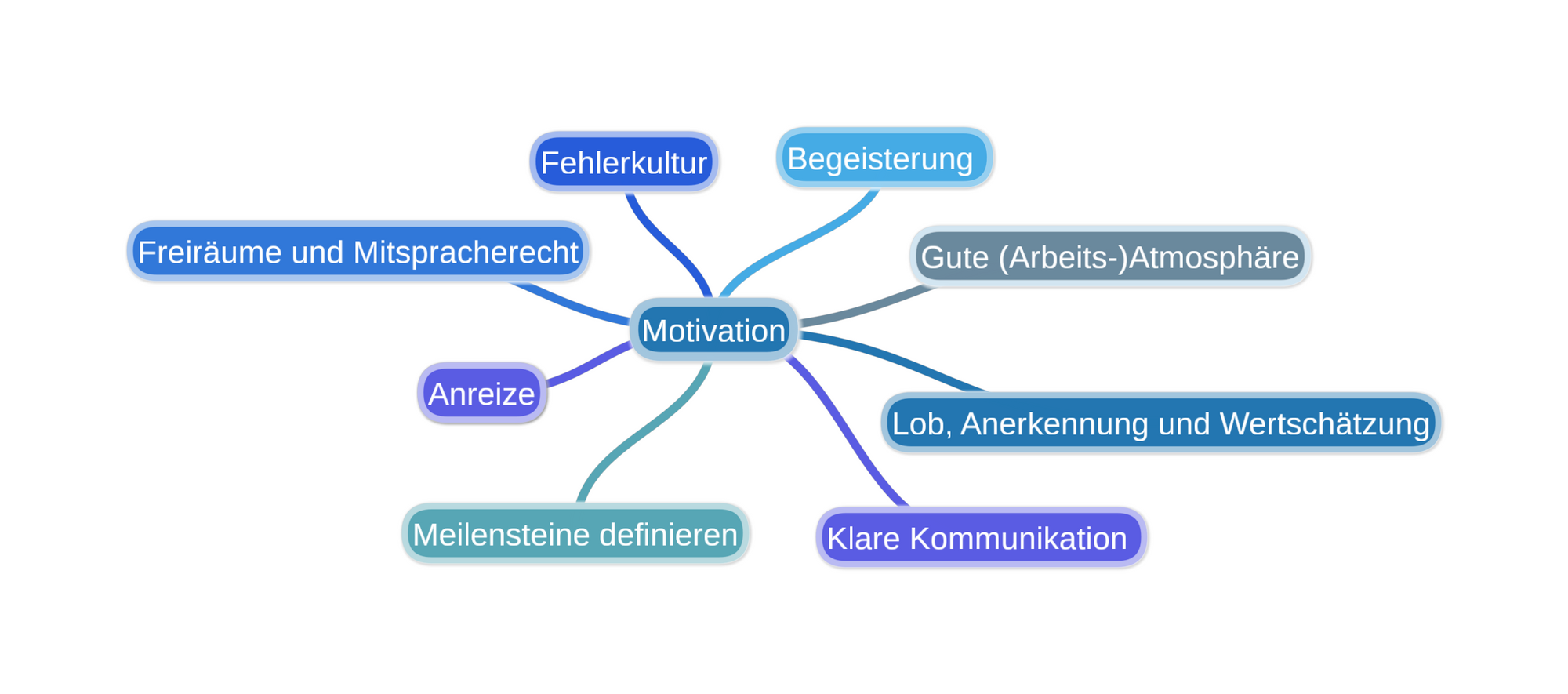The 8 Factors Of Positive Motivation
This is how you manage to arouse, promote and maintain motivation in others

We have already dealt with different types of motivation in an earlier article . In this post, we look at how we can motivate other people. The question that arises first is: Can we motivate other people at all? One would quickly answer: “Yes, of course!“ But let's take a closer look.
If we want to motivate other people to carry out a certain action, it is always first of all an extrinsic motivation. Whether we threaten punishment (negative motivation) or lure the other with rewards (non-negative motivation) is irrelevant.
Negative Motivation
With negative motivation, we literally force our will on someone by pointing out consequences or threatening punishments. This type of motivation tends to do the opposite. Instead of motivating, we provoke reluctance and defiance.
Even if the “(de-)motivated person” initially does what is asked of them, they will quickly find a way to leave the situation or at least make it bearable for them.
Negative motivation leads to a bad mood, a bad (working) atmosphere, resignation and dissatisfaction. Negative motivation often lowers the self-esteem of others. The relationship with each other is thereby extensively damaged.
Non-Negative motivation
With this type of motivation, a reward is offered to the motivated. For example, the employee receives a salary increase after successfully completing a task. In the short term, this motivates the employee. However, if only external stimuli are used for motivation, one would have to keep increasing the "dose" - as with drug addicts - in order to maintain the motivation.
Positive Motivation
But how else can we motivate other people and keep them motivated? By ensuring that intrinsic motivation is promoted. How shall we do it? How do we manage to win and keep people for a cause in the long term?

1. Enthusiasm
Enthusiasm is contagious. We must be convinced ourselves of what we want to achieve with the help of others. This is the only way our enthusiasm for the project can be transferred to others.
2. Clear Communication
The motivated person must know what it is about, which goal is being pursued, which milestones there are and which rules must be observed in order to achieve them.
3. Define Milestones
Big goals and big changes can discourage us because they are "far off" and may not be obvious. Small intermediate goals are more conceivable and tangible.
4. Freedom And The Right To Have A Say
Nobody likes to be bossed around. People need freedom and the feeling of making a difference and being part of something big. Freedom of decision within the defined competence framework promotes independent thinking and the use of one's own knowledge.
5. Error Culture
Everybody makes mistakes. But we can only learn from mistakes. It is important to establish an error culture in which everyone is allowed to make mistakes and learn from them.
6. Good (Working-) Atmosphere
People are more motivated when they feel good. A trusting and respectful interaction is essential for lasting motivation.
This also applies to wit and humor (in the workplace). The extent to which laughing together has an effect on motivation should not be underestimated.
7. Praise, Recognition And Appreciation
All three factors are important for the formation of intrinsic motivation . But what is the difference between praise, recognition and appreciation?
Praise
A praise is expressed as a (timely) positive reaction to a specific action or behavior. It is a form of spontaneous appreciation of a specific achievement. For example, we praise the child who just took their first step: “ Great! You have done a great job! Keep it up! “.
In this context: self-praise doesn't stink! If you do something well, praise yourself for it! This increases self-esteem and keeps you motivated.
Recognition
Recognition is not about recognizing specific behavior or performance. This is not a spontaneous pat on the back.
Instead, some of us receive recognition for consistently performing well or exhibiting a behavior.
Appreciation
If we show our appreciation to a person, we do not judge their performance, but respect them personally with all their good and bad sides.
8. Incentives
As already described, motivation is also promoted if appropriate incentives are offered. However, these should – if at all – be offered individually. In addition, care should be taken to ensure that incentives are not the primary factor for motivation. Otherwise it can happen that the extrinsic motivation replaces the intrinsic motivation.
Conclusion
Extrinsic motivation may work in the short term. Keeping people motivated over the long term requires those people to be intrinsically motivated . This is achieved by combining the factors described. A trusting relationship with each other is the basis for all other factors.